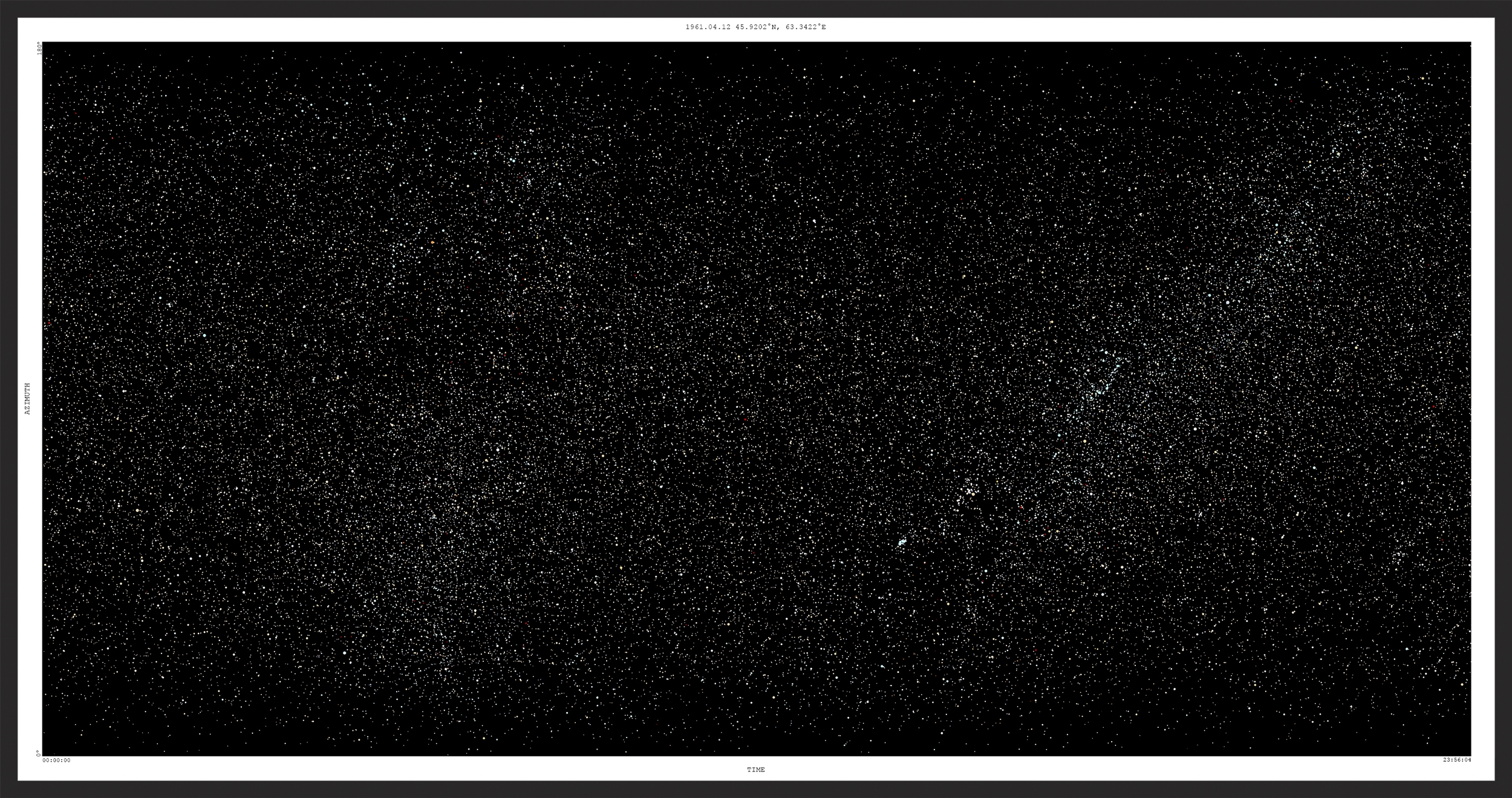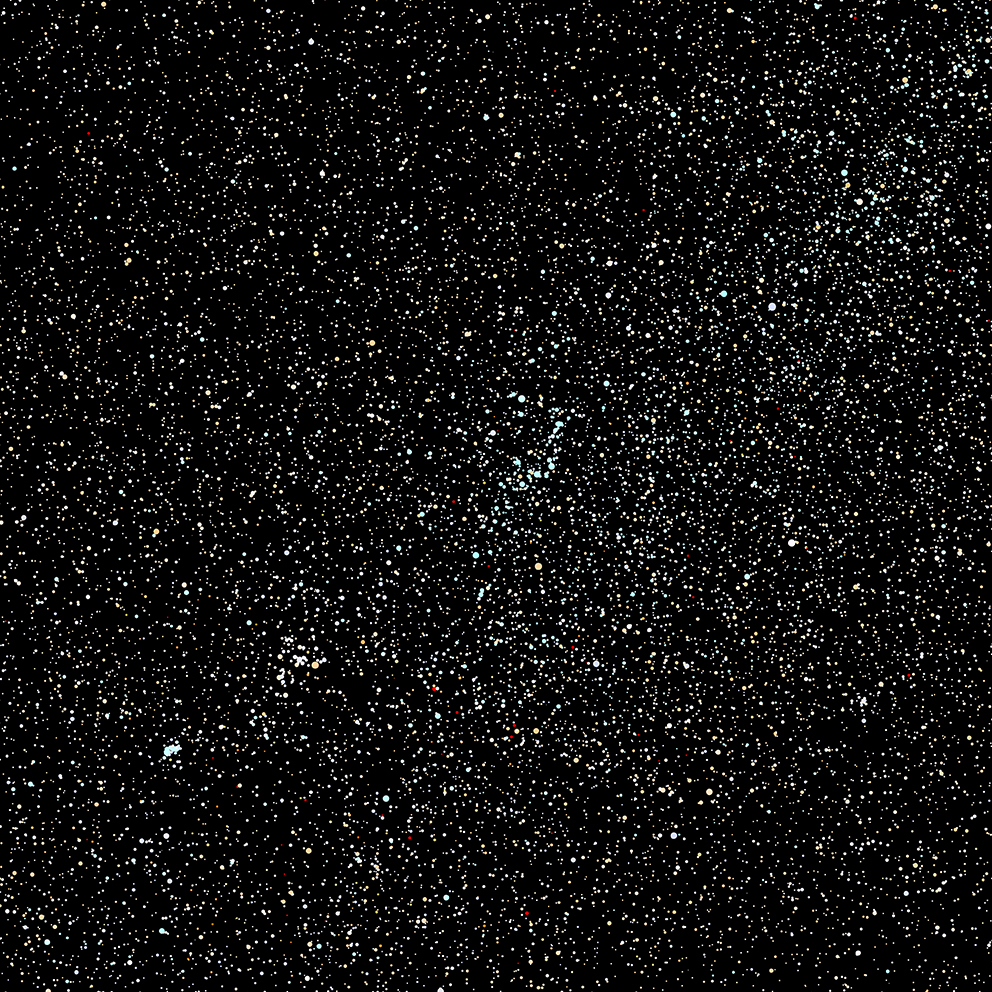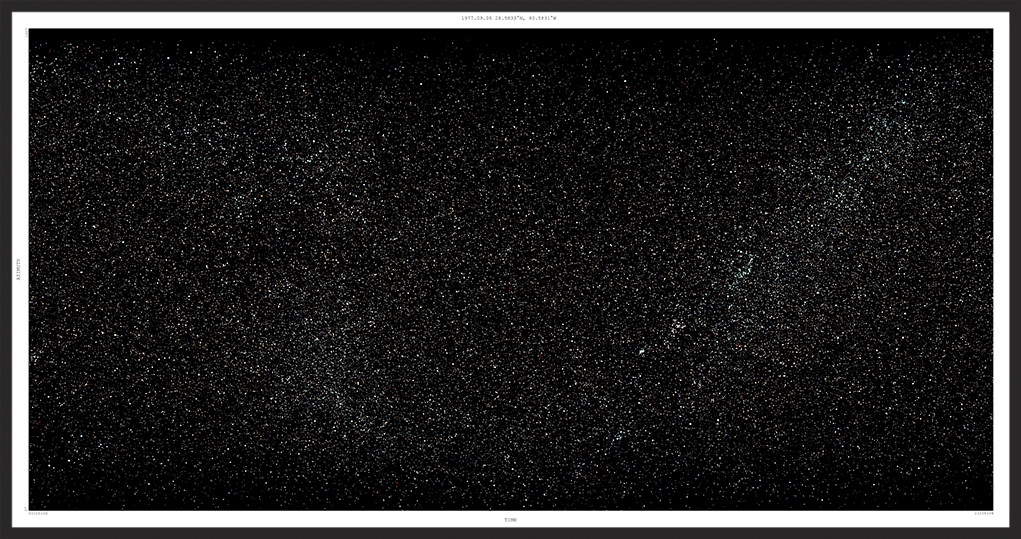Michaela Gleave with Warren Armstrong
1961.04.12 45.9650ºN, 63.3050ºE (Gagarin)
1977.09.05 28.2920ºN, 80.3440Wº (Voyager 1)
2015
Pigment print on photographic rag paper
117 x 61cm / 211 x 111cm
1961.04.12 45.9650ºN, 63.3050ºE (Gagarin) and 1977.09.05 28.2920ºN, 80.3440Wº (Voyager 1) are graphs of the stars for two moments in history that changed humanity's relationship to our surroundings forever. 1961.04.12 45.9650ºN, 63.3050ºE (Gagarin) maps the stars for 24 hours as they rose over the Baikonur Cosmodrome in Kazakhstan on April 12 1961, the time and place from which Yuri Gagarin became the first human being in history to enter outer space. 1977.09.05 28.2920ºN, 80.3440Wº (Voyager 1) documents rising stars over Cape Canaveral Airforce Station on 5 September 1977, the day the Voyager 1 space probe probe was launched, the first human-made object to leave the solar system. A diagram of space and time, these images were produced using a custom computer program that maps position on the eastern horizon along the Y axis, and time along the X axis, the relative star sizes and colours accurate to data from the Hipparchos catalogue. All stars rendered in the image are of magnitude 8 and less, which is the extreme naked eye limit of visibility in very dark skies.


